For millennia, people experiencing regular or periodic lack of water developed ingenious methods to harvest and store every drop of rainwater they could. With changing climate patterns, depletion of water tables, and water restrictions due to unprecedented periods of heat and drought, many BC residents now realize that an abundant water supply is not assured and are thinking about harvesting and conserving this precious resource.
Rainwater harvesting is another way to manage stormwater runoff with the added benefit of being able to put that excess water to use at a later date when water is in shorter supply. Harvesting rainwater typically involves collecting and storing rainwater that would otherwise run off a roof or other impermeable surface. During storms, this diversion of runoff can help prevent flooding and erosion. On the flip side, during dry periods, using the stored water can take pressure off our natural freshwater resources – lakes, streams, and groundwater that may be depleted.
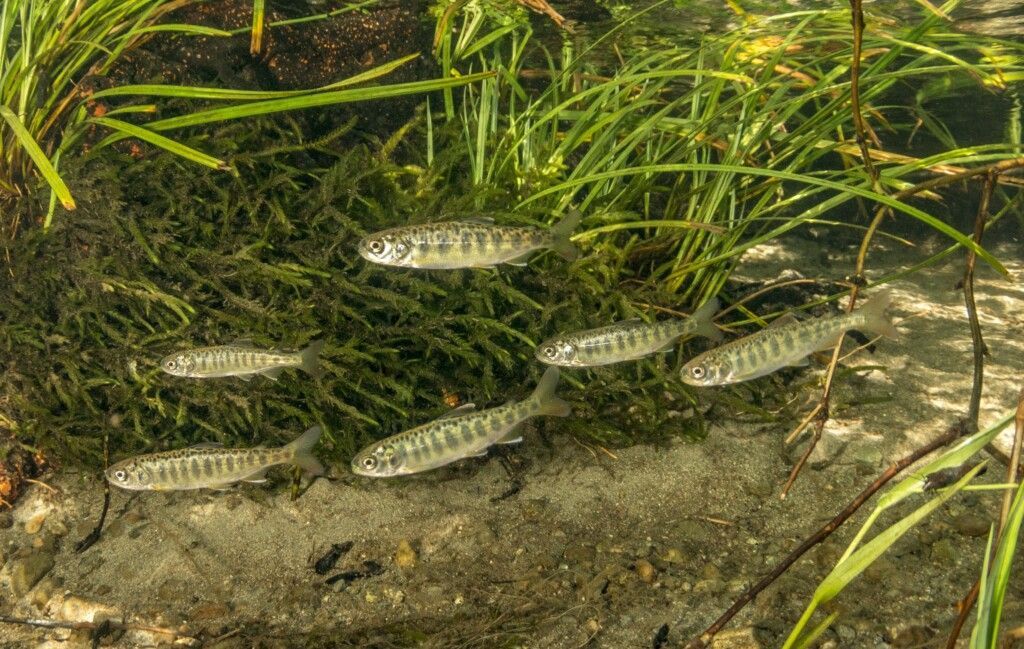
It diverts stormwater runoff from impermeable surfaces which could otherwise contribute to habitat damage from flooding and erosion where spawning salmon lay their eggs and young salmon rear.
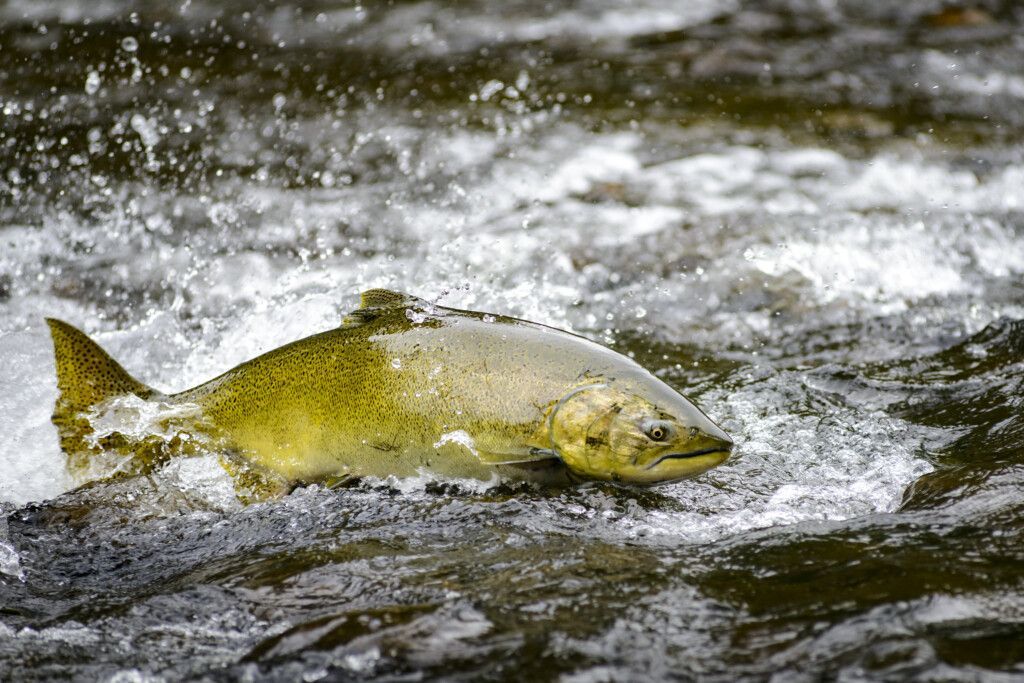
Using harvested rainwater takes off pressure on natural water resources during periods of drought, such as late summer and early fall when salmon need water in streams to migrate.
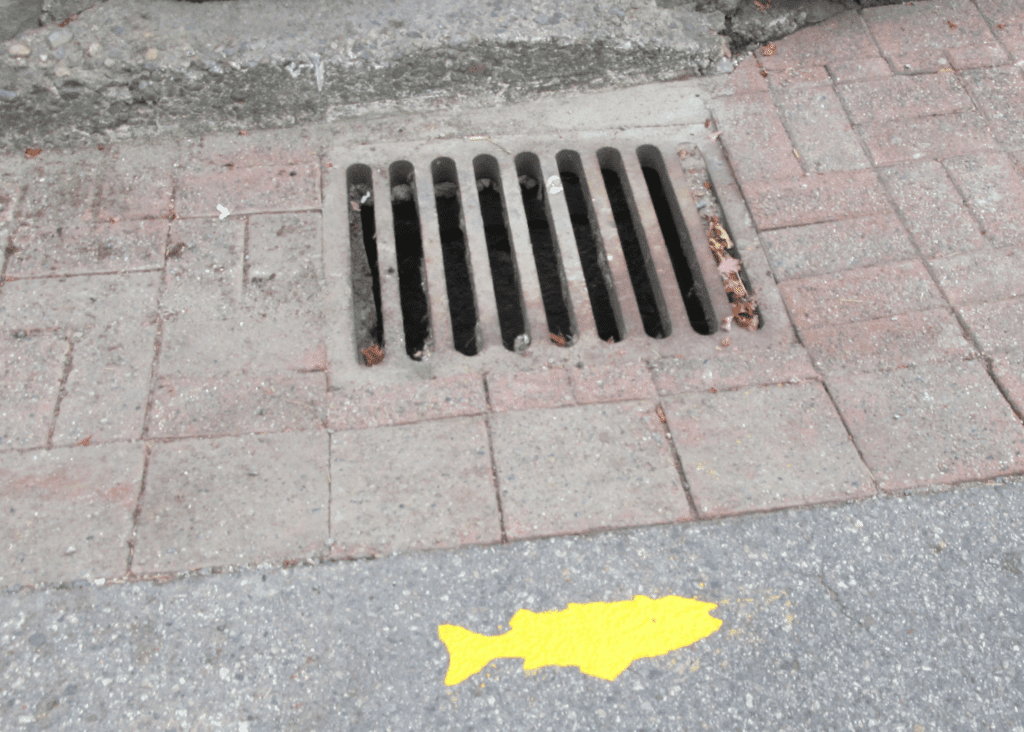
Stormwater runoff often contains pollutants that negatively impact the ecosystem, diverting this water can prevent pollution from entering sensitive environments.
Check out the runoff management article for more information on common contaminants, and other nature-based solutions to capture runoff: Nature-based Solutions to Manage Stormwater Runoff.
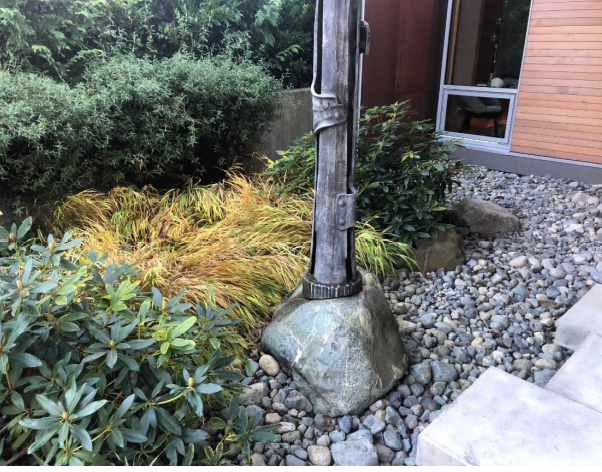
Rooftop rainwater harvesting involves collecting rainwater from the roofs of buildings and houses using gutters, pipes, filters, and tanks or rain barrels. The collected water can be used for various household needs, such as washing, gardening, and even cooking or drinking (depending on the type of roof and ability to purify). Rooftop rainwater harvesting can also recharge groundwater aquifers by diverting the excess water to wells, boreholes, or recharge pits. Here is a schematic of a typical rooftop rainwater harvesting:

Surface runoff harvesting involves collecting rainwater that flows over the ground using swales, ponds, rain gardens, reservoirs, in-ground tanks, and percolation through penetrable surfaces, like sand, gravel, and permeable pavements. Collected water can be used for irrigation and watering livestock. It can also recharge groundwater aquifers when water is directed to infiltration basins, trenches, or percolation tanks instead.
There is no one correct way to harvest rainwater. It depends upon the system's scale, budget, and purpose; however, the costs can vary widely depending on the solutions employed.

Rooftop rain harvesting is the most common and least costly approach for household purposes. Rain barrels, the cost of which are subsidized by many local governments, receive rainwater from a downspout attached to the roof's gutter and provide easily accessible water for the garden and other outdoor purposes, typically having a faucet or hose attachment at the bottom. Multiple barrels can be interconnected via pipes to store a significant amount of water.
For small-scale harvesting for use in the garden, you can even DIY in an afternoon with items from a hardware store, see this example of step-by-step instructions from instructables.com.

For households that do not have a municipal water source or those with significant water needs for garden plots and livestock, a more elaborate system may be required. There are large storage tanks that can hold thousands of gallons of water, which can be placed above or below ground. The tank can be connected to a pump and a filtration system to deliver clean water to different parts of the house or garden.
For large-scale harvesting and when you plan to use the water in your home, including for drinking water, it is best to seek the help of professionals.
Wondering how much you can harvest?
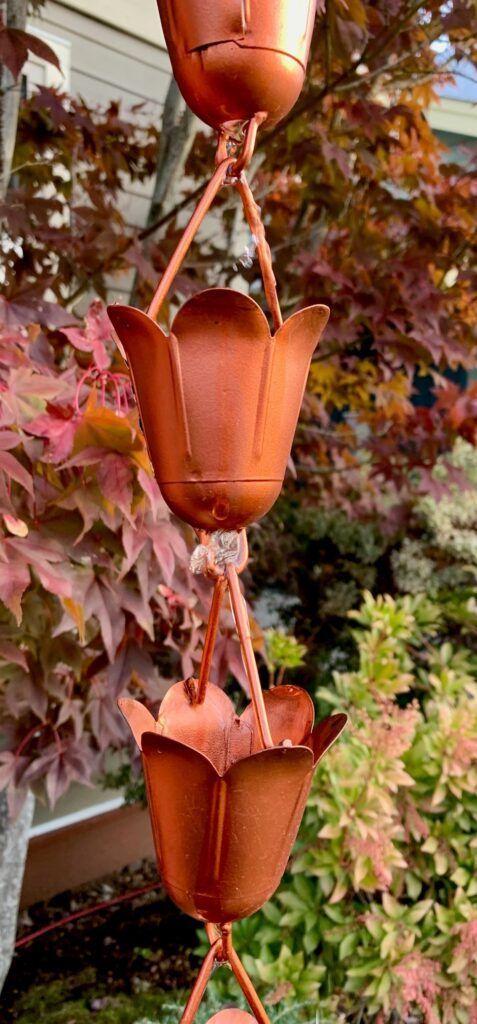
In this post about rainwater harvest ideas on morningchores.com, there is a rainwater harvest calculator. Simply put in the catchment area (the width and length (ft) of your roof you intend to capture water from) and the amount of rainfall (in) expected and it will tell you how many gallons you would receive.
If you wish to calculate it yourself (or prefer metric measurements), for every square metre of roof catchment area and millimetre of rainfall, one Litre of water will be produced. Based on that you can use the following formula will calculate your expected total:
Catchment area (m2) x annual local average rainfall (mm) = ____L
So, for a 10m x 10m (or 100m2) roof in Nanoose, which receives an average annual rainfall of 1086mm, there would be 108,600L (or 108.6m3) of rainwater. Note that the maximum efficiency of a typical harvest system would be between 75-80% of that total due to evaporation, periods of overflow etc.
Learn about rainwater harvesting in BC
In addition to, or instead of rooftop harvesting systems, simple surface runoff harvesting techniques, such as rain gardens and swales, are increasingly popular techniques to capture and filter rainwater. These do not usually supply a readily available source of water for household use but do contribute to groundwater replenishment and natural purification, making water available to plants within the immediate vicinity while also serving to remove pollutants that could otherwise be swept into waterways.
Rainwater harvesting is an ancient and sustainable practice that can help conserve water, save money, improve plant health, and provide an emergency water supply, all of which improves the climate resiliency of our families and communities. By collecting and storing rainwater for later use, we can use a precious natural resource that would otherwise go to waste.
For further information on rainwater harvesting, including ways to establish your own system, try these sites and resources:
Water Harvesting Basics (wateruseItwisely.com)
Water Harvesting - Definition, Importance, Methods, Limitations (geeksforgeeks.org)
23 Awesome DIY Rainwater Harvesting Systems You Can Build at Home (morningchores.com)
Rainwater Harvesting: A Beginner’s Guide (treehugger.com)
Beginner’s Guide to Rainwater Harvesting (familyhandyman.com)
Smith, J. (2010). Rainwater harvesting: Benefits and challenges. Journal of Environmental Science, 12(3), 45-56.
Photo credits: Ed Leszczynskl on Unsplash, Eiko Jones, Photo licensed under CC BY-NC, Photo licensed under CC BY-NC-ND Paul de Greeff, Nicole Christiansen, Illustration by Holly Sullivan